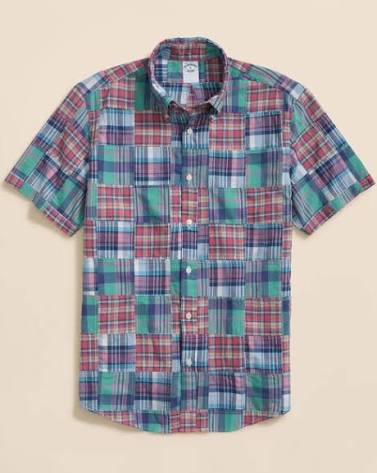
It was an upcoming Christmas in 1962 and there was only one thing on my wish list – a genuine bleeding madras shirt. Madras had popped up on the fashion scene as “the fabric to wear”, especially for wanna-be preppies. Madras referred to a city in India by that name where it had been traditionally worn for many years. Madras was a lightweight, cotton fabric generally woven into colorful plaid patterns, The yarn was too fragile to be combed like ordinary cotton, so it has a unique slubbed texture, and the colors were striking.
Cotton madras clothing had something of a snob appeal and emerged as a status symbol in the US because only American tourists who could afford things like expensive Caribbean vacations were able to afford and buy it. It was a sign of affluence.
The Madras Movement had taken over the campus at UNC and was worn by only the coolest Tarheels. As I recall, the shirts sold for about $9. That compared to the finest men’s Gant shirt at around $5. It was probably the equivalent of $60 or $70 in today’s money. I got one that Christmas and it was beautiful. But it had to be dry cleaned because as everyone knew – madras would bleed in the wash, which turned out to be part of its charm.
Madras used vegetable dyes which were not color fast and they would “run” or “bleed” in the wash. At first, this was a problem for retailers, but they turned that liability into an asset. Stores and clothing companies began advertising madras as “Guaranteed to bleed” meaning the fabric would take on a unique faded look. The campaign was a huge success.
Even today, you see old preppies decked out in madras sport coats or patch work madras shorts. Come to think about it – I’d like a madras shirt for Christmas again this year.

